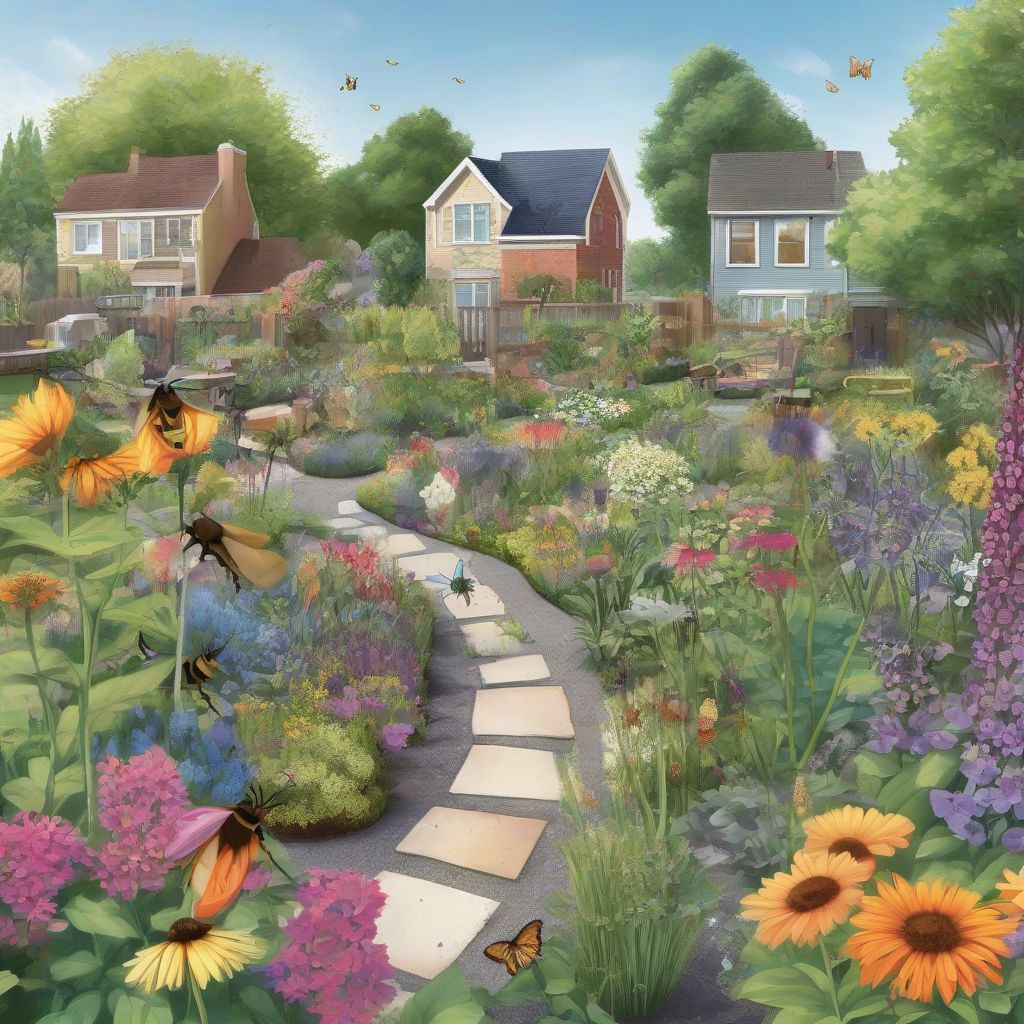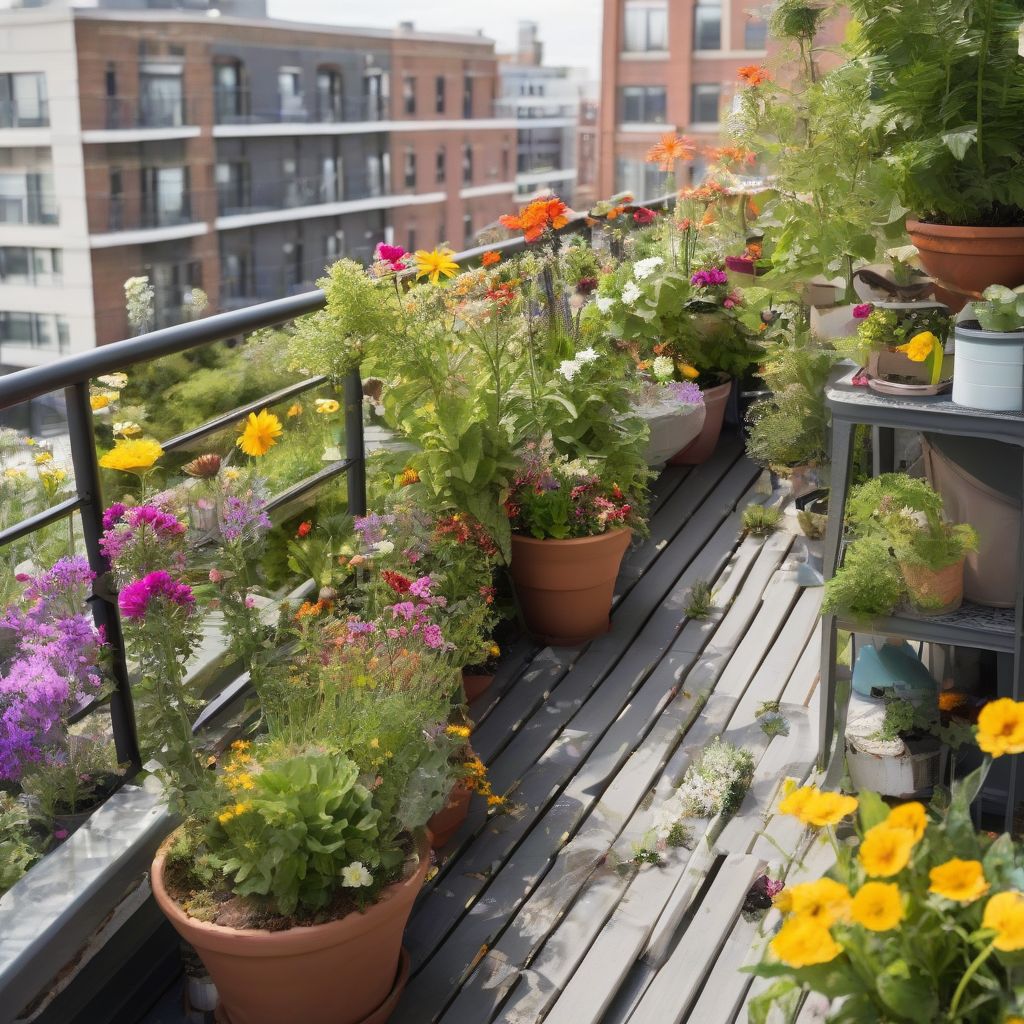Have you ever dreamt of transforming your concrete jungle into a buzzing haven for butterflies and bees? It might seem like a far-off dream, but creating a pollinator-friendly garden in the city is easier than you think! With a little planning and the right plant choices, you can attract these essential creatures and enjoy a vibrant, eco-friendly space right outside your door.
Why City Pollinator Gardens Matter
Before we dive in, let’s talk about why these urban oases are so important. Pollinators like bees, butterflies, and hummingbirds are crucial for a healthy ecosystem. They help fertilize plants, which in turn provide us with fruits, vegetables, and beautiful flowers. Sadly, pollinator populations are declining due to habitat loss, pesticide use, and climate change.
The good news? By creating even a small pollinator garden in your city, you can provide much-needed food and shelter, supporting their survival and contributing to a greener planet.
 Urban Pollinator Garden
Urban Pollinator Garden
Steps to Building Your City Pollinator Haven
Ready to get started? Here’s a step-by-step guide to creating your very own pollinator-friendly garden in the city:
1. Choose the Right Location
- Sunlight: Most pollinators thrive in sunny areas, so aim for a spot that gets at least six hours of direct sunlight daily.
- Shelter: Consider planting near a wall, fence, or existing trees to offer protection from wind and provide a sense of security for visiting pollinators.
- Accessibility: Select a location that is easily accessible for both you and the pollinators.
2. Select the Perfect Plants
The key to attracting pollinators is choosing a variety of plants that offer different shapes, colors, and bloom times.
- Native Plants: Prioritize native plants as they are adapted to your local climate and are more likely to attract native pollinators. Check with your local nursery or gardening center for recommendations.
- Variety is Key: Include a mix of flower shapes and colors to appeal to different pollinators. For example, butterflies are attracted to bright, open flowers, while hummingbirds prefer tubular-shaped blossoms.
- Continuous Bloom: Select plants that flower at different times throughout the year, ensuring a consistent food source for your pollinators from spring to fall.
Expert Tip: Incorporate plants with overlapping bloom times to ensure a constant supply of nectar and pollen throughout the growing season. – Dr. Rebecca Schmidt, Horticulturalist
3. Provide Essential Resources
- Water Source: Create a shallow water source, such as a birdbath with stones or a small dish filled with water and pebbles, to offer pollinators a place to drink and cool down.
- Shelter and Nesting Sites: Include elements like a brush pile, rock pile, or native bee house to provide shelter and nesting opportunities for various pollinators.
- Avoid Pesticides: Opt for natural pest control methods or choose plants that are naturally resistant to pests to protect these beneficial insects.
4. Garden Design for Pollinators
- Plant in Groups: Arrange plants of the same species in groups to create larger blocks of color, making it easier for pollinators to spot your garden from afar.
- Vertical Gardening: Maximize space by incorporating vertical elements like trellises or hanging baskets, providing additional foraging opportunities.
- Create Pathways: Leave small gaps or paths between plants to allow pollinators to easily navigate your garden.
 City Balcony Pollinator Garden
City Balcony Pollinator Garden
5. Maintenance and Care
- Water Wisely: Water your garden deeply and less frequently to encourage strong root growth and conserve water.
- Deadhead Spent Blooms: Regularly remove spent flowers to encourage more blooms and prevent the spread of diseases.
- Mulch Around Plants: Apply a layer of organic mulch to help retain moisture, suppress weeds, and improve soil health.
Top Pollinator-Friendly Plants for City Gardens
Here are a few specific plant recommendations that are well-suited for urban environments and loved by pollinators:
- Bee Balm (Monarda spp.): These vibrant flowers attract bees, butterflies, and hummingbirds with their fragrant, nectar-rich blooms.
- Black-Eyed Susan (Rudbeckia hirta): These cheerful yellow daisies provide a long bloom time and are a favorite of butterflies and bees.
- Butterfly Weed (Asclepias tuberosa): As the name suggests, this plant is a magnet for butterflies, especially Monarchs, which rely on it as a host plant for their caterpillars.
- Lavender (Lavandula angustifolia): This fragrant herb attracts bees and butterflies with its beautiful purple blooms and provides a calming aroma for your garden.
- Salvia (Salvia spp.): Available in a wide range of colors and sizes, Salvia plants offer long-lasting blooms that attract hummingbirds, bees, and butterflies.
[amazon bestseller=”pollinator garden”]
Reap the Rewards of Your Urban Oasis
Creating a pollinator-friendly garden in the city is a rewarding experience. Not only are you supporting the environment and helping these crucial creatures thrive, but you’ll also enjoy the beauty and vibrancy they bring to your urban space. Imagine stepping out your door to the gentle hum of bees and the vibrant flutter of butterfly wings—a little slice of nature right in the heart of the city. So why wait? Start planning your own pollinator paradise today!
